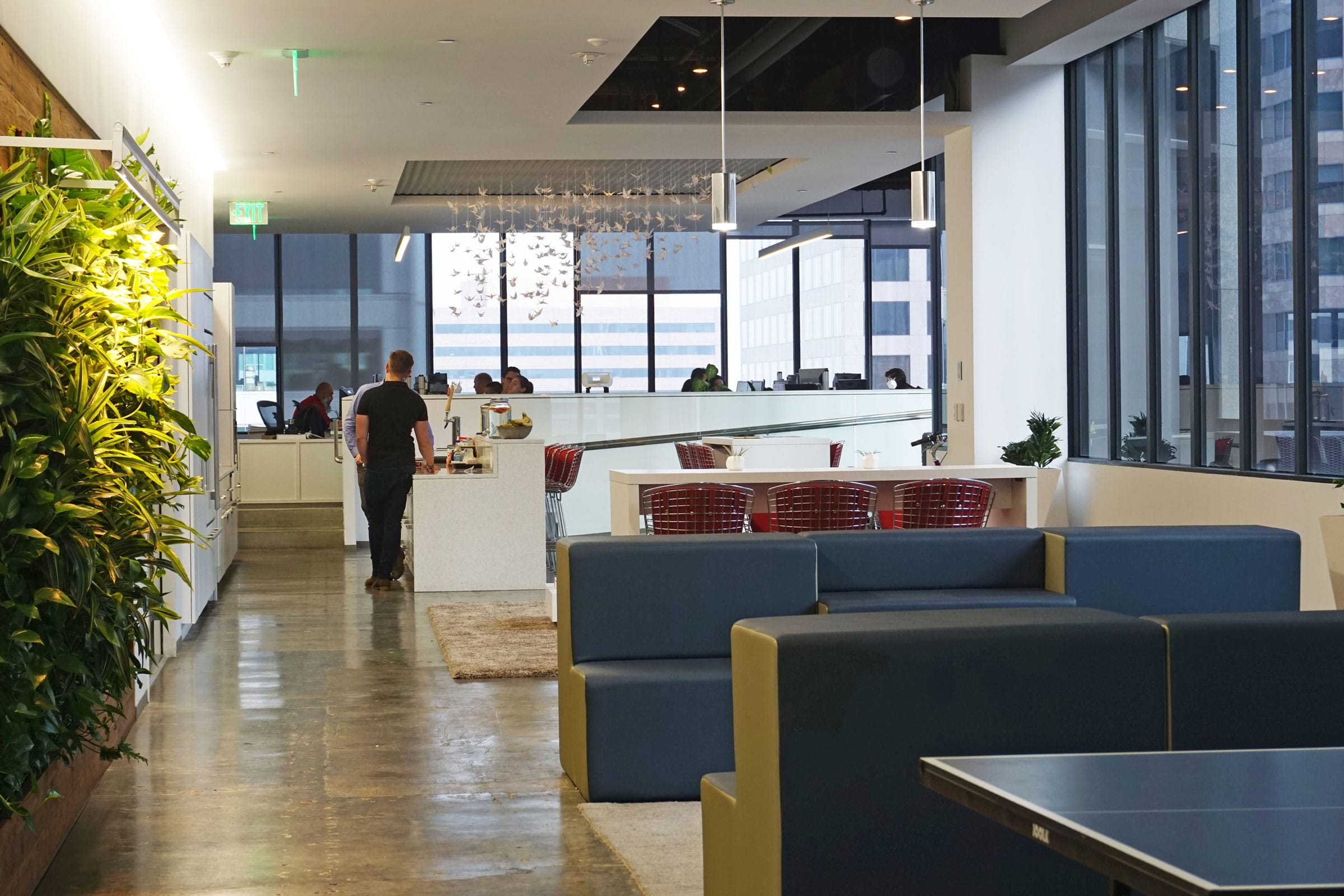
Buro Happold engineering headquarters uses the HBA framework to create a healthy, positive, and adaptable office environment. Courtesy of Buro Happold
With a global pandemic, rampant wildfire smoke, and the economic and social pressures that have all altered our relationships to buildings and space, the Healthy Building Alliance (HBA) offers a path for wellness. The alliance, which the USGBC-LA launched in May 2020, puts forth a commitment toward making and maintaining healthy, resilient spaces to live work and play.
HBA exists with the hope of making healthy buildings a standard. “In putting together the Healthy Building Alliance, the focus for us was really to make healthy buildings more accessible and provide a framework so that anyone could engage in the healthy building process and at least have a pathway to provide healthier space,” says Ben Stapleton, executive director at USGBC-LA.
Using five principles of occupant health—indoor air quality, access to nature, inspiring movement, green cleaning, and water testing—the HBA promises to make recommendations and help partners install, maintain, and understand data to monitor each of the five principles, should the members choose to share their data with HBA. Current members and partners include many realtors in Los Angeles, where the alliance is headquartered, as well as some residential property owners and several larger commercial properties, including Buro Happold.
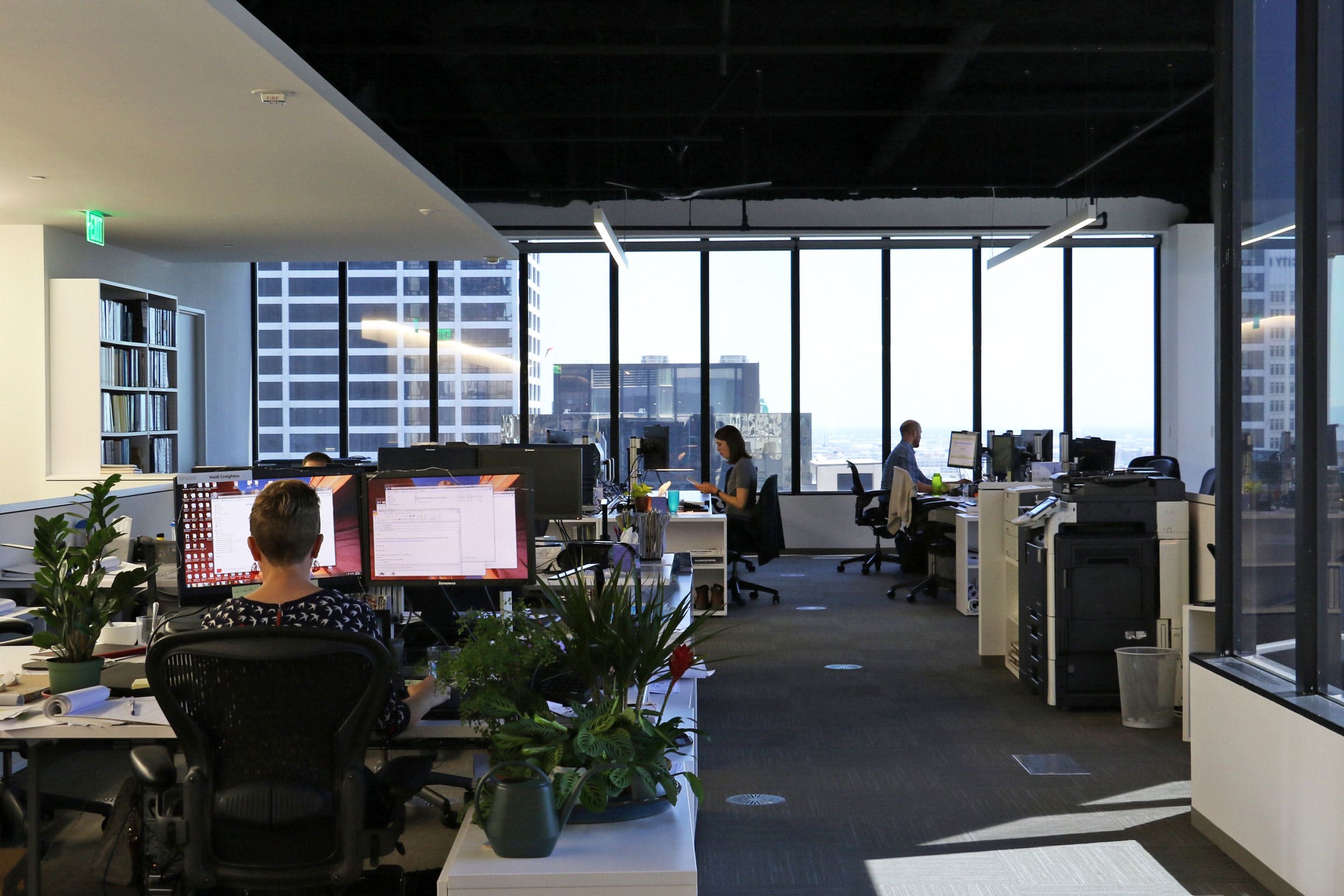
Courtesy of Buro Happold
Wellness Design in Action at Buro Happold
Buro Happold’s headquarters is located in downtown Los Angeles and is the first major case study for the Healthy Building Alliance. HBA provides Buro Happold the framework for working with their landlord to build a space with healthy air and water, green cleaning, access to nature, and ways to get moving at work, per the five principles of occupant health.
Indoor Air Quality
With stay-at-home orders in effect for many months and a whole lot of attention being paid to the outdoor air quality index outside, what with all the fires, indoor air quality is generally becoming more of a concern and priority. In the Buro Happold building, three Awair air quality sensors track real time air quality. The data collected, including measurements of particulate matter, carbon dioxide, total volatile organic compounds (VOCs), humidity, and temperature, is tracked and reviewed on a schedule. Air filters are changed quarterly, but the bulk of the technologies are one-time purchases and relatively inexpensive.
See Also: Inside the Most Sustainable Municipal Building in the World
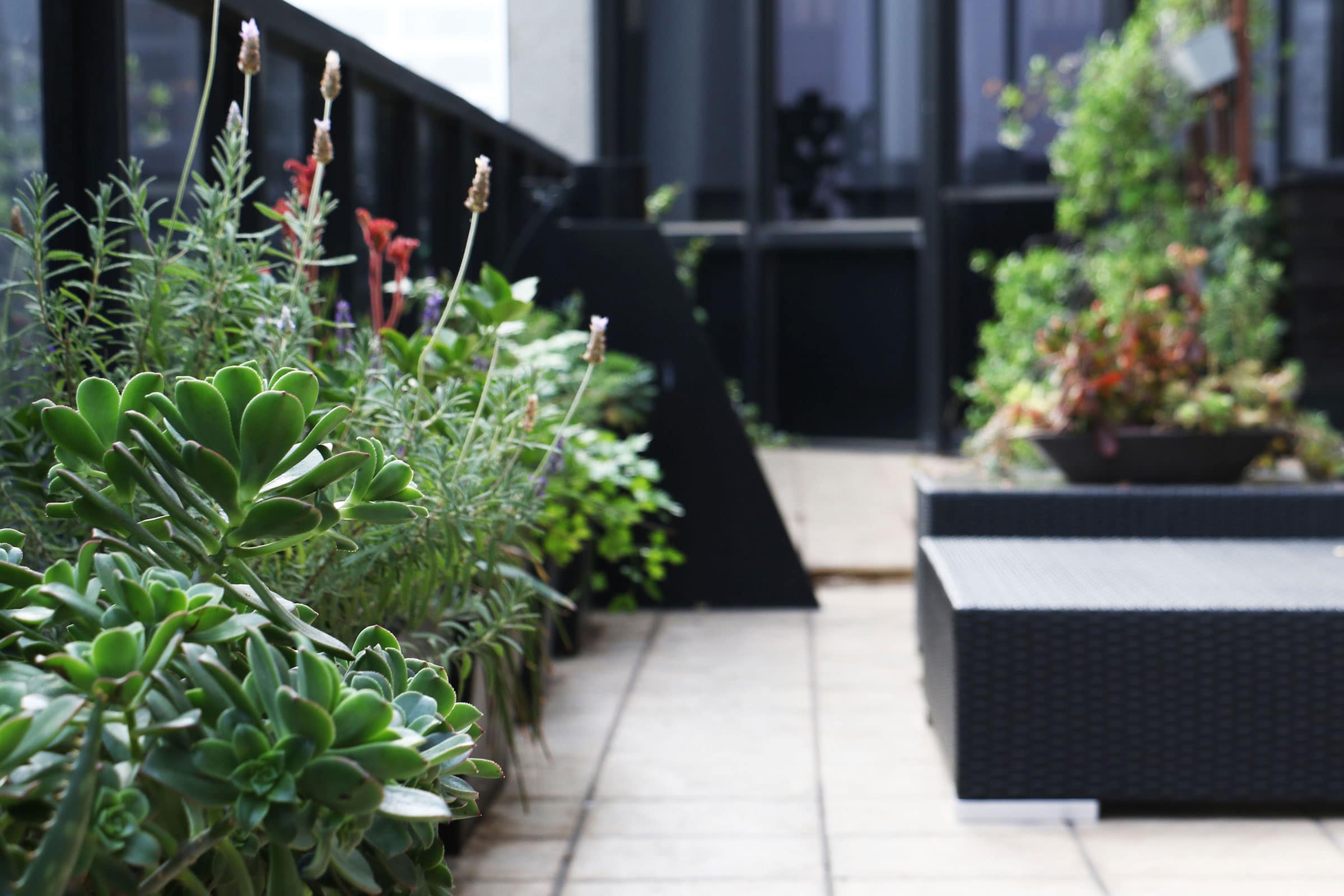
Courtesy of Buro Happold
Access to Nature
Nature helps make a workplace more welcoming and pleasant. “It’s very important that there’s some sort of green space that’s accessible, especially at this time when we are all more concerned about mental health, and the data points to the positive impacts that nature can have on people,” says Stapleton. On their floor suite in downtown LA, Buro Happold brought nature indoors in the form of two large plant walls, natural wood finishes, and two balcony gardens where native plantings, succulents, and edible plants grow, nurtured in part by collected rainwater and fertilized with compost from vermiculture installations.
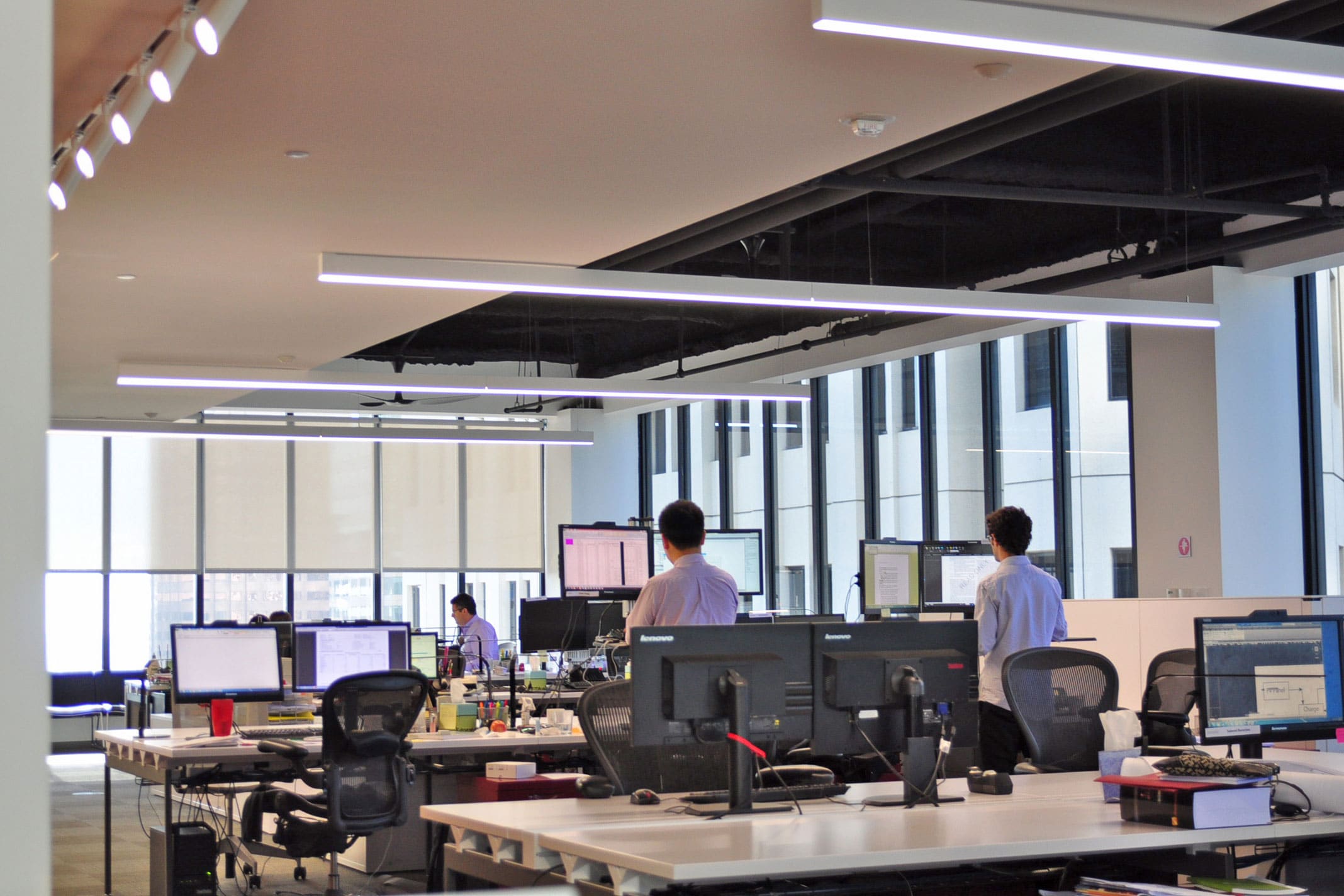
Courtesy of Buro Happold
Inspire Movement
Employees in the space are encouraged to stay active with ergonomically designed standing and cycling desks. Additionally, the office has partnered with the Metro Bike Share and provides a Metro transit subsidy to all staff. The central location of the office means there are parks and areas for outdoor movement nearby.
Green Cleaning
The Healthy Building Alliance provides members a green cleaning plan, which can be adapted to the space. Together with the janitorial staff, HBA upgraded the cleaning plan at Buro Happold to reduce the presence of harmful VOCs for the sake of employees and staff. Furthermore, HBA worked with the building staff to schedule more frequent inspections of AHU coils and air filters.
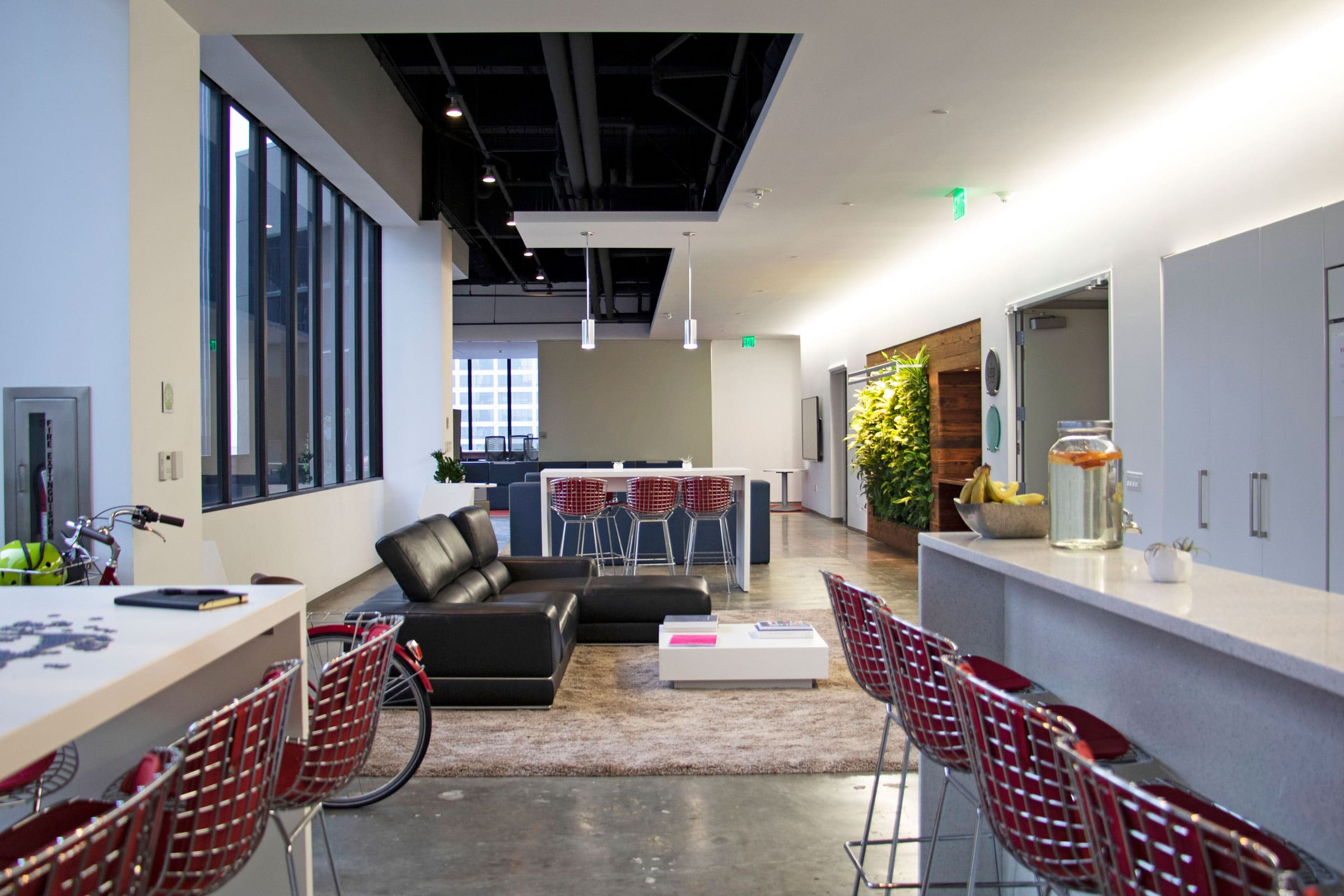
Courtesy of Buro Happold
Water Quality
Buro Happold has dual carbon under sink water filters onsite as part of an aggressive filtration system that was put in place following initial testing. Quarterly water tests are reviewed against the WELL requirements to determine if changes to the filtration system is necessary.
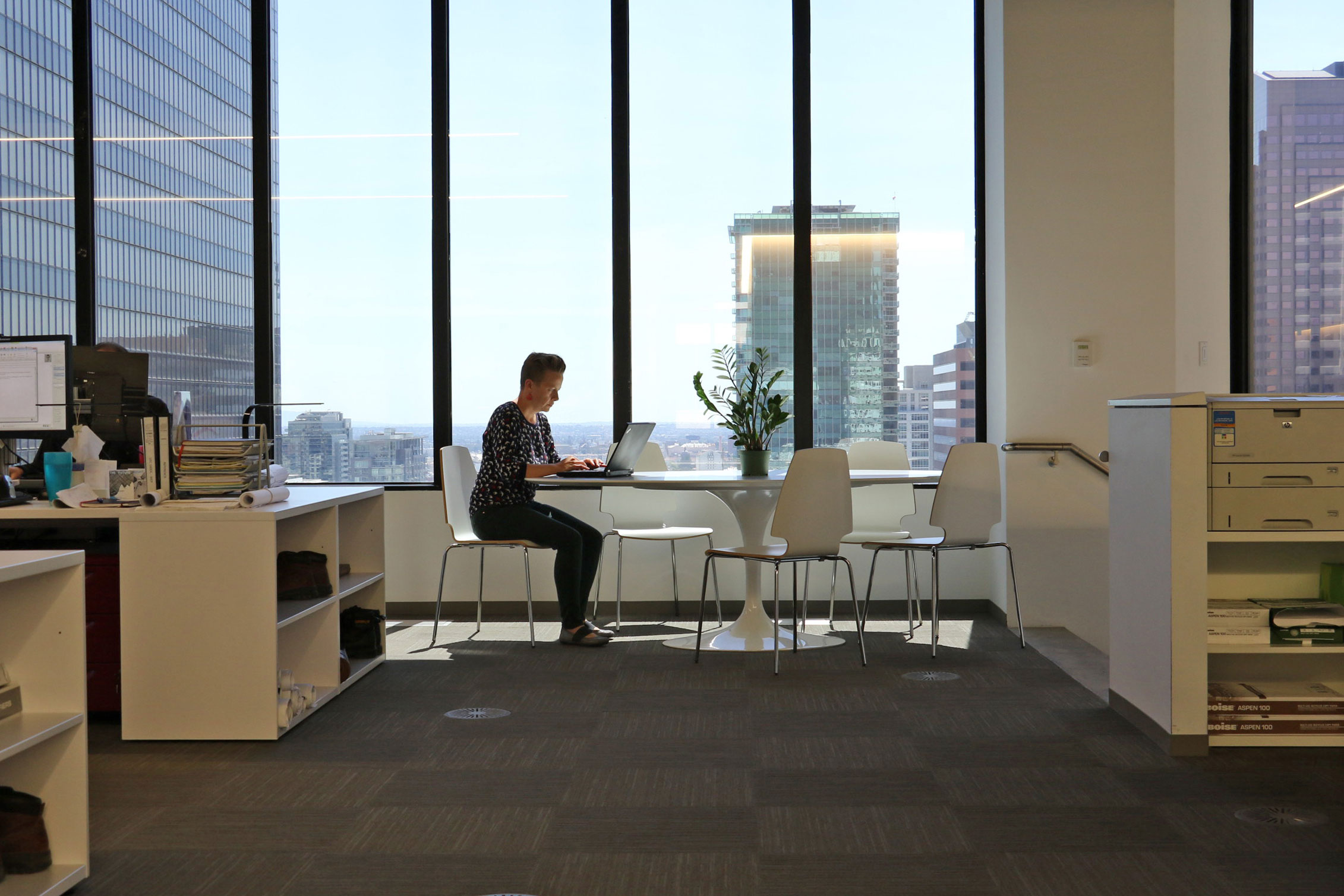
Courtesy of Buro Happold
Engaging Landlords and Tenants
One of the struggles of HBA is figuring out how to get both landlords and tenants onboard with the collection of data for the five principles. “Landlords can’t really get that involved because once they collect data, it could be an invasion of privacy—there’s liability. Buro Happold is a good example of tenants working in a framework with landlords, because as they implemented some of our strategies in their space, it really forced them to engage their landlord in a different way than they had in the past,” Stapleton says.
The communication between landlords and tenants allows for both to prioritize and understand the quality within the buildings. When that level of communication and engagement extends to the staff and the building process is transparent, those who use the building buy into the process of making it a healthy space for everyone.
Long-Term Goals
USGBC-LA says the Healthy Building Alliance is a commitment, not a certification. It’s not a one-and-done process, but a journey toward improved, healthier buildings. During this period of heightened awareness of our living and working environments, the experts at USGBC-LA say the alliance offers a framework to continue to develop healthier spaces across the board over time. The long-term goal is equity: inexpensive partnerships, a solid framework for wellness design in residential and commercial buildings, and awareness of what makes the space feel better.
Eventually the HBA hopes to impact disadvantaged communities by having real data on what makes a healthy space. When it comes to air and water quality, which can be definitively measured, there is a lack of data for indoor spaces, particularly in disadvantaged communities. “Part of the reason we launched this program is that air pollution is most often highest in our disadvantaged communities, and it’s most likely worse inside the buildings, which are typically less well-maintained and are built with cheaper materials,” Stapleton says. “We want to use this program to try to get data to track and eventually improve this compounded problem.”
